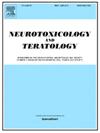Hydrogen activated the Nrf2/HO pathway to alleviate the cognitive decline in PD Drosophila after long-term sevoflurane exposure
IF 2.8
3区 医学
Q3 NEUROSCIENCES
引用次数: 0
Abstract
The demand for surgical and anesthetic care in patients with Parkinson's disease (PD) is projected to increase, because PD is the fastest-growing neurological disorder. Sevoflurane, the most commonly used volatile anesthetic, is neurotoxic to human and animal neonatal brains. Moreover, sevoflurane-based anesthesia can induce postoperative delirium (POD) in patients with PD. Therefore, our study was aimed at finding an effective treatment for sevoflurane-induced neurotoxicity in patients with PD by using a PD-POD Drosophila model. The small gas, hydrogen (H2), was found to ameliorate learning and memory impairment, and increase the lifespan of PD flies, after long-term sevoflurane exposure. The performance index of the PD-POD flies increased by 30 % after H2 inhalation. Moreover, H2 inhalation decreased oxidative stress levels in PD fly brains, and increased electron transport chain and OXPHOS efficiency, as well as ATP synthesis, thus indicating enhanced mitochondrial function. In addition, PD flies with H2 inhalation after sevoflurane exposure showed increased nuclear levels of Nrf2 and expression of its downstream target HO. Therefore, H2 might exert antioxidant effects by activating the Nrf2/HO pathway, thereby decreasing oxidative stress levels and apoptosis in PD fly brains after long-term sevoflurane treatment. Inhalation of H2 is likely to be an effective and convenient method to alleviate the neurotoxicity effects or POD caused by long-term sevoflurane exposure.
氢激活Nrf2/HO通路,减轻长期七氟醚暴露后PD果蝇的认知能力下降。
帕金森病(PD)患者对手术和麻醉护理的需求预计将增加,因为PD是增长最快的神经系统疾病。七氟醚是最常用的挥发性麻醉剂,对人类和动物新生儿的大脑有神经毒性。此外,七氟醚麻醉可引起PD患者术后谵妄(POD)。因此,我们的研究旨在通过PD- pod果蝇模型,寻找一种有效的治疗PD患者七氟醚诱导的神经毒性的方法。研究发现,长期暴露于七氟醚的小气体氢(H2)可以改善PD蝇的学习和记忆障碍,并延长其寿命。吸入H2后,PD-POD蝇的各项性能指标提高了30 %。此外,吸入H2降低了PD蝇脑内氧化应激水平,增加了电子传递链和OXPHOS效率,以及ATP合成,从而表明线粒体功能增强。此外,七氟醚暴露后吸入H2的PD蝇核内Nrf2水平和下游靶标HO表达增加。因此,H2可能通过激活Nrf2/HO通路发挥抗氧化作用,从而降低PD蝇长期七氟醚处理后脑内氧化应激水平和细胞凋亡。吸入H2可能是缓解七氟醚长期暴露引起的神经毒性或POD的一种有效、便捷的方法。
本文章由计算机程序翻译,如有差异,请以英文原文为准。
求助全文
约1分钟内获得全文
求助全文
来源期刊
CiteScore
5.60
自引率
10.30%
发文量
48
审稿时长
58 days
期刊介绍:
Neurotoxicology and Teratology provides a forum for publishing new information regarding the effects of chemical and physical agents on the developing, adult or aging nervous system. In this context, the fields of neurotoxicology and teratology include studies of agent-induced alterations of nervous system function, with a focus on behavioral outcomes and their underlying physiological and neurochemical mechanisms. The Journal publishes original, peer-reviewed Research Reports of experimental, clinical, and epidemiological studies that address the neurotoxicity and/or functional teratology of pesticides, solvents, heavy metals, nanomaterials, organometals, industrial compounds, mixtures, drugs of abuse, pharmaceuticals, animal and plant toxins, atmospheric reaction products, and physical agents such as radiation and noise. These reports include traditional mammalian neurotoxicology experiments, human studies, studies using non-mammalian animal models, and mechanistic studies in vivo or in vitro. Special Issues, Reviews, Commentaries, Meeting Reports, and Symposium Papers provide timely updates on areas that have reached a critical point of synthesis, on aspects of a scientific field undergoing rapid change, or on areas that present special methodological or interpretive problems. Theoretical Articles address concepts and potential mechanisms underlying actions of agents of interest in the nervous system. The Journal also publishes Brief Communications that concisely describe a new method, technique, apparatus, or experimental result.

 求助内容:
求助内容: 应助结果提醒方式:
应助结果提醒方式:


